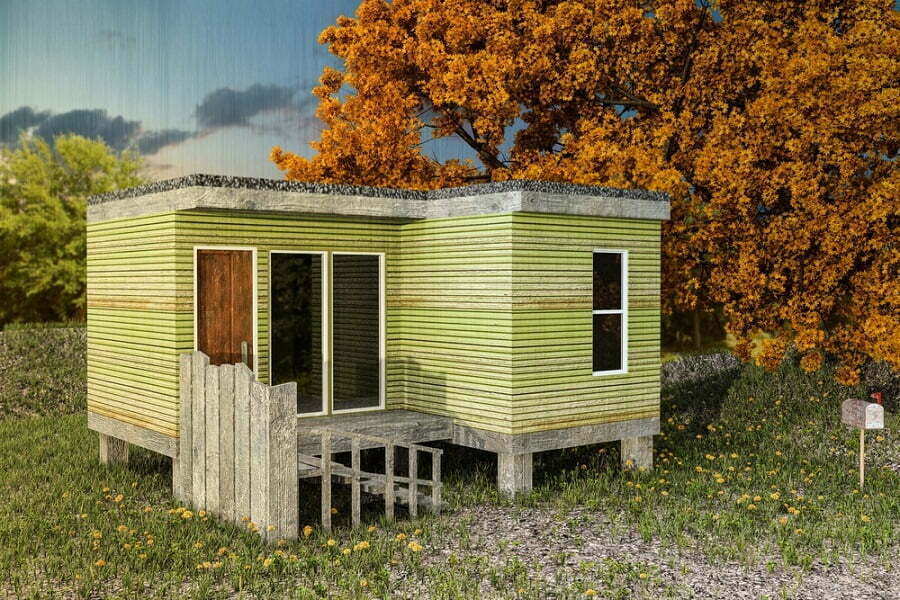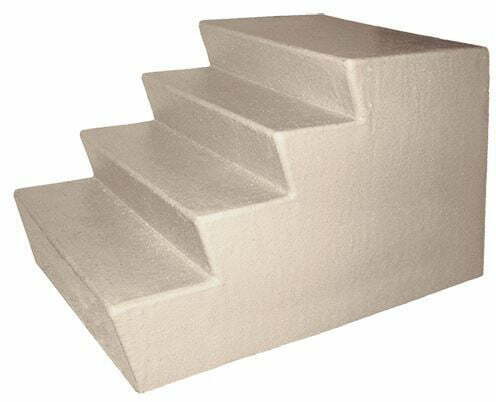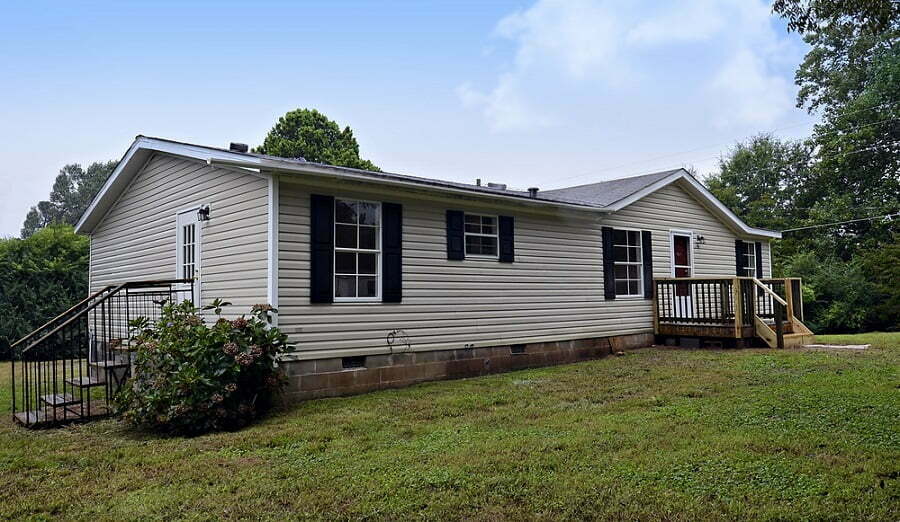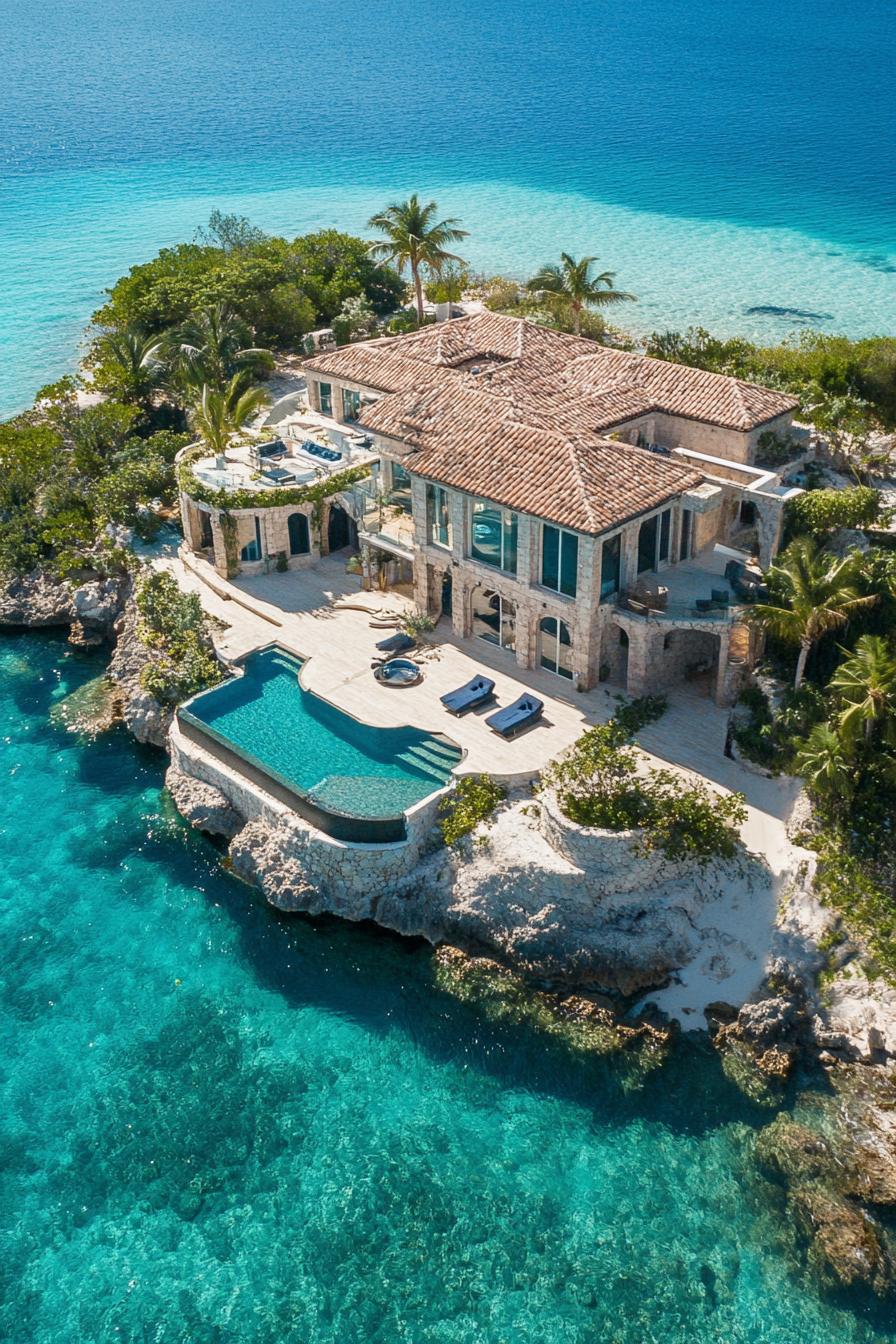Last updated on
Choose from the most popular types of entrance steps for mobile homes to increase your curb appeal. Read on to learn all about them and make the right choice.
Entrance steps will not only help people enter a mobile home, but they will also increase the home’s curb appeal, especially if you go for steps with beautiful railings or modern fiberglass steps. What you choose depends on your budget, your home’s design, and your goals.
This guide will help you understand this part of a mobile home and choose the right type. We cover all of the main types of steps and stairs typically used on modern mobile houses.
Let’s begin.
Mobile Home Steps vs. Stairs

Although you may often see them utilized interchangeably, steps and stairs are technically different structures. Use the term “steps” when referring to mobile home entrances with three or fewer risers. Use the term “stairs” when pointing to four or more risers. To make it easier to remember, steps are generally smaller than stairs.
Parts of Mobile Home Steps
Learning about the different parts of mobile home steps will help you make better decisions, save on costs, and get satisfying results. Vital parts of the structure include the tread, nose, riser, and stringer. If you plan to include railings, key components include posts, balusters, railing caps, top rails, and bottom rails.
Rise and Run
Consider the rise and run when you are building steps. Rise is the vertical distance between steps or how high you need to raise your feet to reach the next level. Meanwhile, the run is the horizontal distance or depth of each riser. Your local codes dictate acceptable measurements for both.
Slope
Notice that stairs rise diagonally, unlike ladders which can go straight up. The slope is the angle formed by the stairs concerning the ground. It is a good idea to keep the slope of your steps and stairs within 30 to 40 degrees. Anything higher might be dangerous and hard to climb, while anything lower might lead to inefficient use of space.
Tread
The tread is the material that you will use to cover the horizontal distance of the step. You put your feet on this part when you climb or descend. It could be made of wood, concrete, plastic, tiles, fiberglass, or metal. Check your local codes to determine the recommended length, width, and height.
Nose
Look closely at different stair designs. Sometimes the tread stops right when it meets the riser, but it may also extend outwards slightly. This small protrusion is called the nose. If present in the design, it should be limited to an inch or less.
Railings
Railings protect you from falling or slipping while using the stairs. Small steps may not need these, but bigger stairs do. The balusters are the vertical components spaced 4-6″ apart that cover the sides of the railings. These help keep things within the steps. They are particularly helpful for kids and pets.
Wood Mobile Home Steps

Wood has always been the most popular material for building mobile home steps. You can find affordable options everywhere. It is also easy to work with using standard tools. Select specialized wood for outdoor spaces to ensure longevity and stability. Look for pressure-treated pine, moisture-resistant cedar, insect-repelling redwood, or composite materials.
Fiberglass Mobile Home Steps

You will often find fiberglass in boats and RVs. It pops up anytime a lightweight and durable material is necessary. Fiberglass is easy to maintain. Wood requires constant upkeep, while fiberglass shrugs off the elements. You can build a wooden frame and cover it with fiberglass for protection.
Concrete Mobile Home Steps

Many mobile home steps are built with simple and reliable concrete. Driveways are made of this material, so you know that they can withstand a lot of weight and last for more than a lifetime. Remember that moving this around is a challenge if you need to take your mobile home elsewhere.
Metal Mobile Home Steps

If you need steps for your mobile home, consider using metal options. Metal is rigid and relatively lightweight. It has a high strength-to-weight ratio, so you can depend on it for intense applications while having the confidence that you can move it around if you must.
Prefab Mobile Home Steps
Although you can build your own steps, you may also purchase prefab mobile home steps instead. It can save you a lot of time and effort. It is a better option if you don’t have the tools, the know-how, or the drive to build this structure.
Plastic Mobile Home Steps
Don’t think that plastic is flimsy. Modern manufacturing techniques can create highly durable steps suitable for mobile homes. These can endure long-term exposure to the sun, rain, and wind without noticeable damage. Most are made from PVC or polyethylene. The downsides are that they might look cheap and become slippery when wet.
Pressure Treated Wooden Steps with Metal Framing
You do not have to stick to a single material for the entire structure. You can combine two or more to optimize their strengths. For example, you might get pressure-treated wooden steps with metal framing. The metal makes it strong and lightweight, while the wood enhances the visual appeal.
Portable Wheelchair Ramps
If you or a family member has limited mobility, you might want to purchase a portable wheelchair ramp. This is a lightweight yet sturdy platform that you can place on top of your steps. It has an extended run to reduce the slope angle and make it easier to move up or down.
The Standard Size of Steps for a Mobile Home
The proper size for the steps of a mobile home will depend on the local codes. Most recommend a slope between 30 and 40 degrees and a nose under 1 inch. If there are balusters, these should be spaced 4-6 inches apart. The standard stair dimensions call for a 7-inch rise and 11-inch run.
Regulations and Codes
When building any structure, big or small, consult the existing regulations and codes. Following these will help ensure safe and convenient steps. If you are not familiar with these, consult an experienced carpenter or contractor. They can make recommendations based on your specific needs.
Cost
The cost of entrance steps for mobile homes will depend on size and materials. Fiberglass is the most expensive among the different options, while concrete comes in second. Plastic, metal, and wood are relatively more affordable. Expect to pay between $200-$400 in a 3-step configuration just for the materials.
FAQ
Fiberglass steps are durable and light. It’s a great alternative to concrete and wood stairs.
One way to improve the appearance of the front of a mobile house is by adding a porch. A porch adds a sense of security and warmth to the exterior. Adding stairs is a cheaper way to add to your mobile home’s curb appeal.
As mentioned earlier, fiberglass lasts longer than other materials (as long as 75 years). But, they still require maintenance. So, you will need to keep them clean and free from debris. Also, you will need to check them regularly for signs of deterioration.
Concrete is usually more expensive than wood. It is more challenging to build concrete stairs.
Table of Contents




